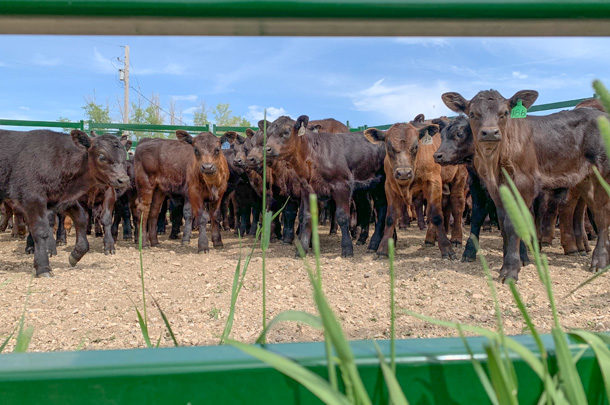Animal welfare is a hot topic among all sectors of agriculture – and as cattle producers, it is something we have practiced for generations. However, there are two major issues when it comes to animal welfare:
1. The disconnect between what we practice and consumer understanding of what we practice
2. Keeping up to date with ever-evolving animal science research and animal welfare practices
The choices you make on your operation can address both issues, turning animal welfare into a competitive advantage instead of a hot topic.
Food and shelter are the basics of animal welfare. Cattle producers have an obligation to meet the nutritional and physical needs of their animals, keep them safe from harm, and address any health issues. This includes working with a veterinarian on a herd health plan, administering vaccinations, providing nutritional supplements where needed, good fencing for containment, adequate shelter, access to clean water and a low-stress environment.
There are many reasons why animal welfare is important on our cattle operations. First and foremost – it is the right thing to do. We have a responsibility to care for the animals that provide our livelihood. Beyond that, animal welfare is beneficial for the reputation of our operation and the industry and for our economic viability. The initial investment in quality cattle care leads to healthier animals and a greater return on investment on sale day.
We further enhance animal welfare when we incorporate the latest practices from the experts. This includes animal scientists at universities and others who study ways to improve our industry – from the feed and care we provide to how we work cattle and the equipment we use. Operations with the highest standards of animal welfare find that it is a competitive advantage that differentiates their operation and leads to a sustainable and successful business model.
What does animal welfare look like on a cattle operation?
What does it look like to run a cattle operation that has fully integrated all the best practices and built a sustainable and successful model? It starts with the values of the operation. When animal welfare is a core value, it is communicated and shared among all handlers on the operation and naturally carries over to day-to-day work. An operation that embraces animal welfare does not necessarily have the best equipment, the best cattle and the most expensive nutritional supplements. Instead, they make the best of everything they have. Focus on what your operation has and how you can make it work for your cattle.
Operations that have animal welfare at the forefront utilize low-stress cattle-handling techniques to work their cattle, in addition to meeting the basic food and shelter requirements. These operations also share their animal welfare values and practices with neighbors, consumers and other producers for the good of their own operation and the industry.
Steps to improve animal welfare on any operation
We can improve animal welfare on any operation by taking a holistic approach. Here are six steps that can dramatically improve your operation.
1. Start with an animal welfare audit. What is going well and where can you improve? Be honest with yourself and seek outside feedback from your veterinarian, a cooperative extension educator or other professional cattle producers. Use Beef Quality Assurance (BQA) standards as the basis for your audit. Once you’ve identified challenges, formulate a plan to address weaknesses and strengthen your animal welfare practices.
2. Stay cattle focused. The cattle should be our primary focus and determining factor in every decision we make about animal welfare. All changes and decisions on your cattle operation should benefit the cattle – if they do not, consider eliminating them. Create plans for dealing with extreme weather conditions, accidents and injuries before they happen.
3. Enhance and upgrade your facilities. This seems simple, but how often does fixing a fence or piece of equipment get put off until another day? Immediately fix anything that could become an animal welfare issue for cattle. Accidents will still happen, but we can reduce their incidence by taking a proactive approach to our facilities and upgrading to low-stress equipment when possible.
4. Provide training and refresher courses for livestock handlers. Everyone is busy, and that is certainly true on cattle operations. However, the things we spend time on become the things that are important. Animal welfare cannot be a top priority for livestock handlers if it is not a top priority for owners and managers. Scheduling trainings accomplishes two goals:
- It reminds us of best management practices while refreshing our skills.
- It signals to all handlers that this is an important topic.
5. Seek the latest research and developments in animal welfare. The field will continue evolving, and that is why it is important to become a lifelong learner by staying up-to-date on trends and science in the field. Being one of the first to embrace improvements to animal welfare is how your operation gains a competitive advantage.
6. Communicate your commitment to animal welfare with your neighbors and consumers. We all have a role to play in changing the conversation about animal welfare in the beef cattle industry. Share your values with your neighbors and consumers to help them understand how important animal welfare is to cattle producers.
When we improve animal welfare on our operations, our cattle do not just survive – they thrive. And that, in turn, influences how well our cattle operation does, from our reputation to our economic viability. Animal welfare is a competitive advantage, and it is also the right thing to do on every operation.








